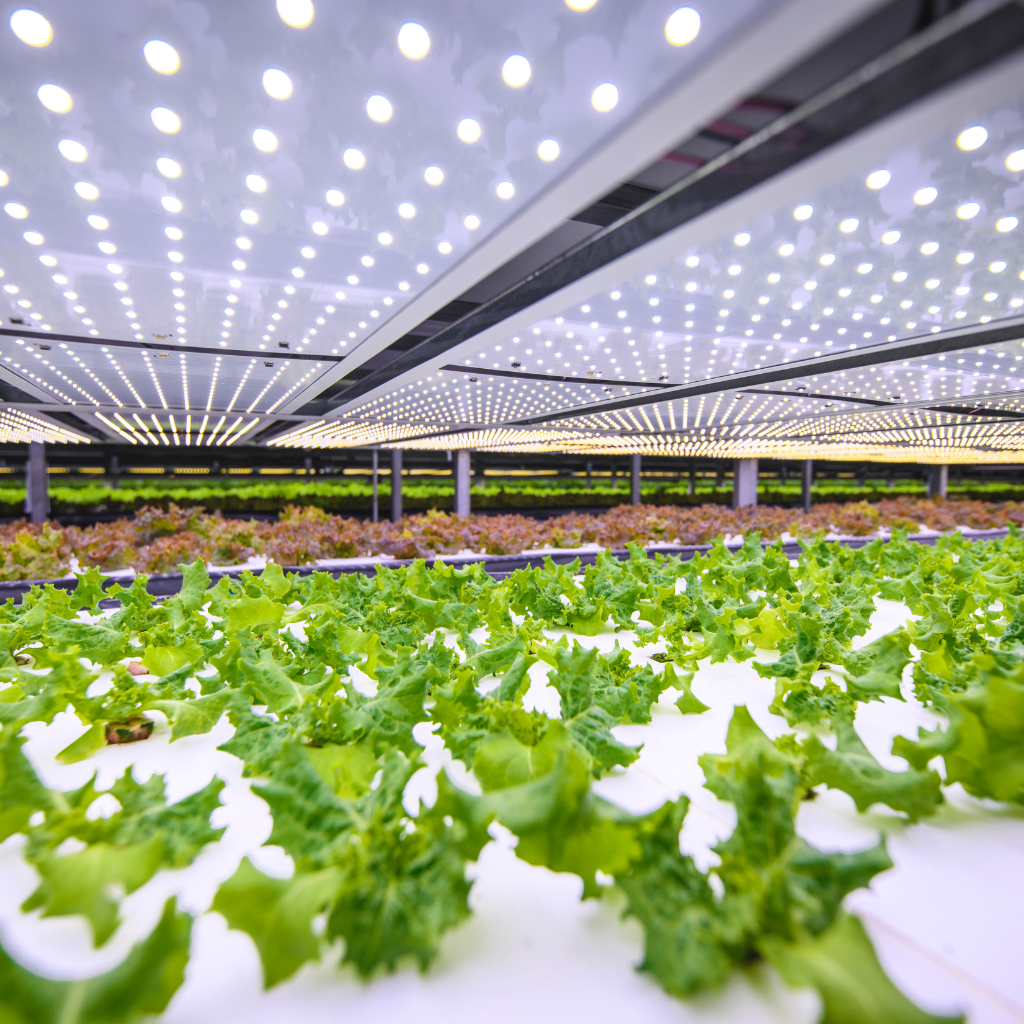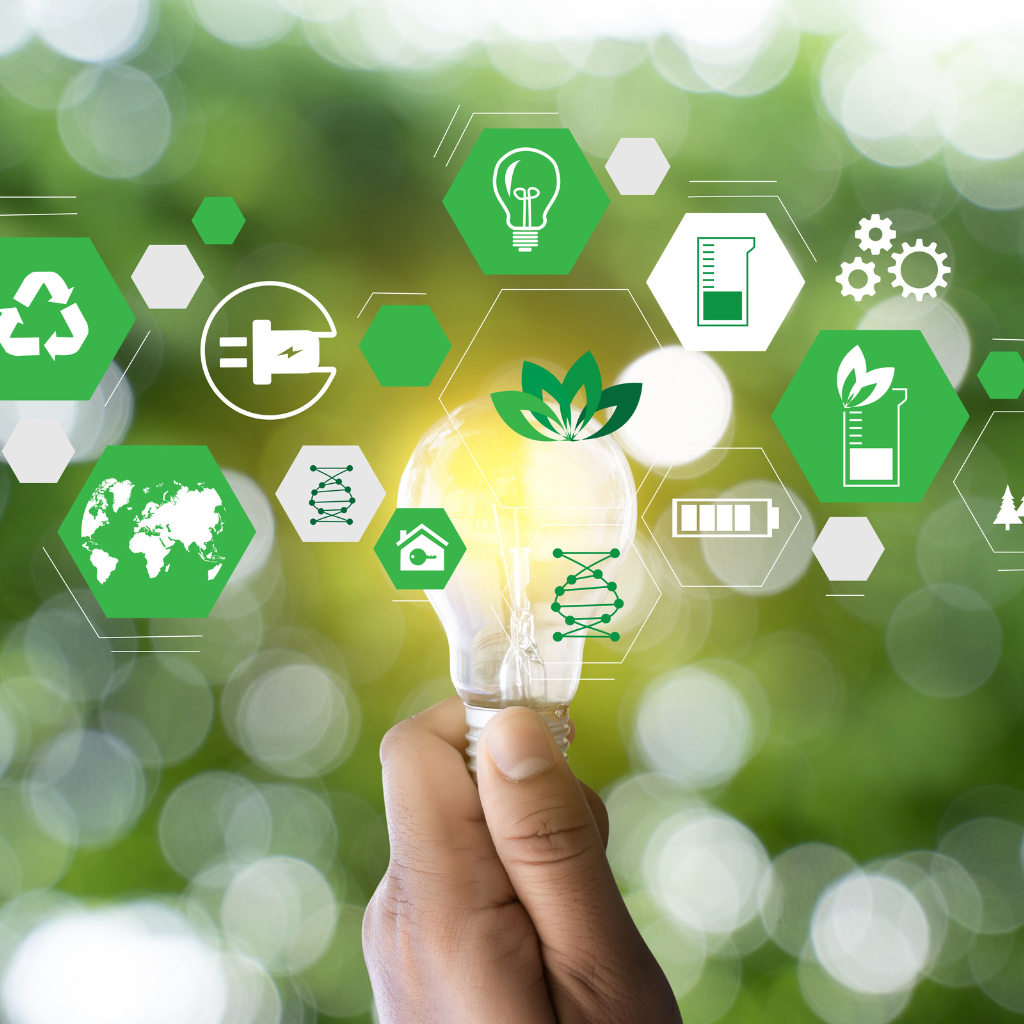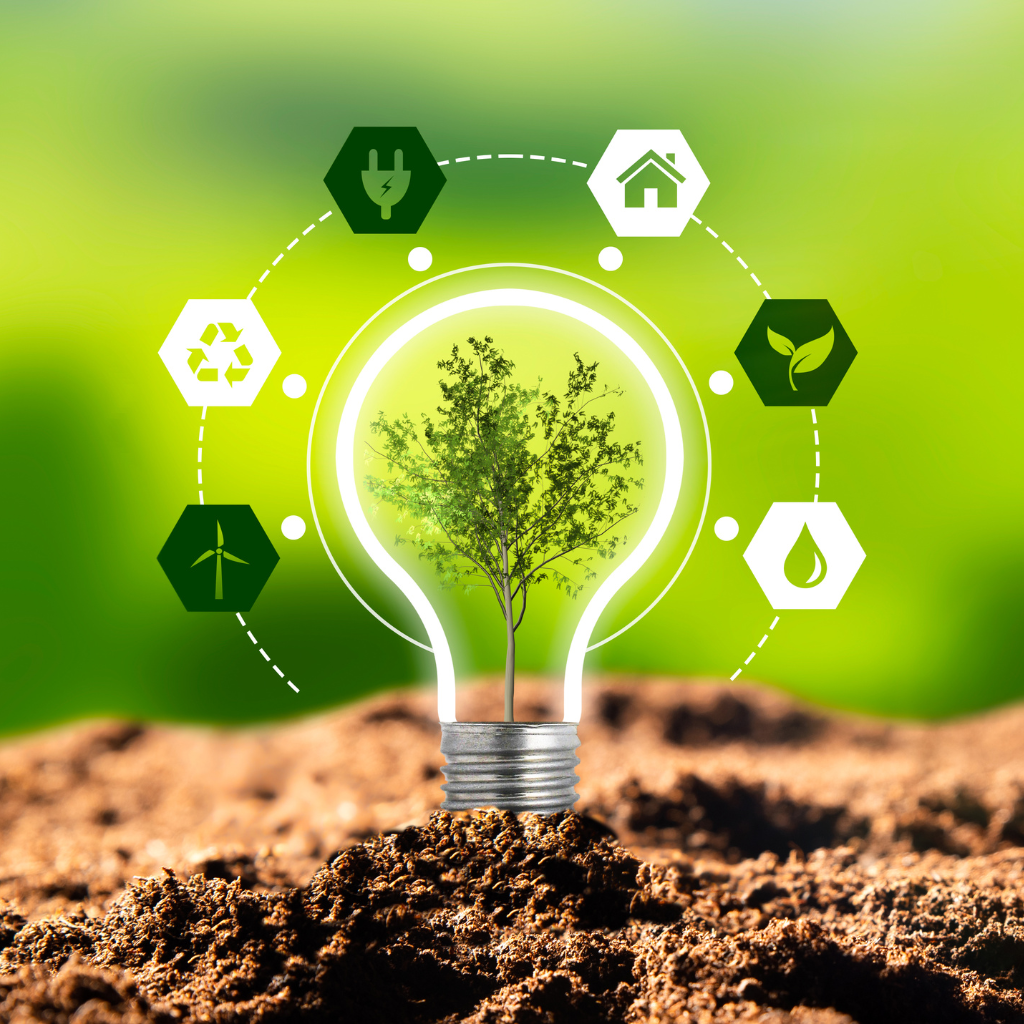Sustainable technologies are one of the best approaches and tools which are responsible for the development of technologies that help us live in a way that is better for the environment, using resources wisely and reducing harm to nature. Sustainable technology solutions are innovative ways to make our future greener and more environmentally friendly. One of the solutions of sustainable technology is solar panels which capture the energy from the sun and convert it into usable power without causing pollution. Another example is wind turbines, which are large structures with spinning blades. Wind turbines are clean and don’t produce harmful emissions.
Water conservation techniques help us use water responsibly and avoid wasting this precious resource. Using water-efficient fixtures, fixing leaks, and practicing responsible water usage are some ways to conserve water. Intelligent thermostats control and optimize the temperature in buildings for maximum energy efficiency. They learn and adjust to your preferences, saving energy when you’re not home.
Some examples of sustainable technologies are given below:
● Wind Turbines
Giant structures with rotating blades harness the power of the wind to generate electricity, providing clean energy for communities and businesses.
● Energy-Efficient Buildings
Constructing homes and offices with proper insulation, efficient appliances, and intelligent energy management systems to reduce energy consumption and lower carbon emissions.
● Water Conservation Technologies
Installing water-efficient fixtures, using rainwater harvesting systems, and adopting responsible water usage practices to minimize water waste and preserve this vital resource.
● Smart Grids
Advanced energy distribution systems that use sensors and data analytics to optimize electricity transmission, integrate renewable energy sources, and reduce energy loss.

● Sustainable Agriculture Techniques
Employ organic farming, precision agriculture, and permaculture to minimize chemical use, protect soil health, and ensure sustainable food production.
● Energy Storage Systems
Using advanced batteries or other storage technologies to store excess energy generated from renewable sources for later use ensures a consistent supply of clean energy.
Prioritize Investment In Research And Development For Sustainable Technologies
To develop sustainable technologies following action should be taken
● Policy Support And Regulation
Implement supportive policies and regulations that incentivize the development and adoption of sustainable technologies. This can include tax incentives, subsidies, and mandates that encourage renewable energy, energy efficiency, and sustainable transportation solutions.
● Collaborate And Share Knowledge
Foster collaboration among governments, businesses, and research institutions to share knowledge, expertise, and best practices. Encourage the exchange of information on sustainable technology solutions, success stories, and lessons learned to accelerate progress.
● Education And Awareness
Promote education and awareness campaigns to inform the public about the importance of sustainable technology solutions and their benefits.
● International Cooperation
Foster international cooperation and collaboration to address global environmental challenges. Share knowledge, technologies, and best practices across borders to accelerate the adoption of sustainable technology solutions worldwide.
● Consumer Awareness And Demand
Raise consumer awareness about the environmental impact of their choices and the benefits of sustainable technologies.
● Continuous Improvement And Innovation
Embrace a culture of continuous improvement and innovation in sustainable technology solutions. Foster an environment encouraging experimentation, learning from failures, and adapting to emerging challenges and opportunities.
Innovations For A Sustainable Future: Environmental, Economic, And Social Benefits
Sustainable agriculture practices promote responsible farming methods that reduce harmful chemicals. Organic farming, crop rotation, and efficient irrigation techniques help protect soil health and minimize environmental impact. Innovations in sustainable technology solutions offer promising avenues to address environmental challenges and promote a greener world and help to build a sustainable future.

These innovations offer environmental benefits and present economic opportunities and social progress.
● Renewable Energy Generation
One of the cornerstones of sustainable technology solutions is renewable energy generation. Hydroelectric plants harness the energy of flowing water, and geothermal systems tap into the Earth’s heat. Renewable energy generation means creating electricity or other types of energy using sources that naturally replenish themselves and don’t run out. It’s like using energy from resources that keep coming back, unlike fossil fuels which can eventually get used up.
● Energy Storage Systems
Efficient energy storage systems are crucial for maximizing the potential of renewable energy sources. Emerging technologies like flow batteries and solid-state batteries show promise for even greater energy storage capabilities. They enable us to store excess energy produced during times of high generation and use it when there is a higher demand or when renewable sources are not actively producing energy. This helps in balancing the supply and demand of electricity and ensuring a reliable and continuous power supply.
● Smart Grids
Smart grids represent the next generation of power grids, incorporating advanced communication, control, and automation technologies. These grids enable two-way communication between utilities and consumers, facilitating efficient energy management and load balancing. According to the experts from CDR Report Writer, smart grids have the capability to seamlessly integrate renewable energy sources, dynamically manage energy demand using real-time data, and optimize energy distribution. Smart grids are like advanced versions of the traditional electricity grid. Imagine your home is connected to an intelligent grid. Smart meters, like special energy meters, help track this information.
● Energy-Efficient Buildings
Sustainable building technologies focus on reducing energy consumption and environmental impact. These technologies include efficient insulation, energy management systems, smart lighting, advanced HVAC systems, and energy-efficient appliances. By implementing energy-efficient building practices, we can significantly reduce energy usage, lower carbon footprints, and create healthier indoor environments. Retrofitting existing buildings with energy-saving solutions presents a significant opportunity to make a substantial impact on energy conservation and emission reduction.
● Circular Economy Solutions
The concept of a circular economy aims to minimize waste and maximize resource efficiency. Sustainable technology solutions are integral to a circular economy by promoting recycling, upcycling, and waste-to-energy conversion. Recycling processes enable the recovery of valuable materials from waste, reducing the need for new resources. Upcycling transforms waste materials into new products of higher value. Advanced composting techniques turn organic waste into nutrient-rich soil amendments, supporting sustainable agriculture.
● Sustainable Transportation Solutions
Besides EVs, innovations like hydrogen fuel cell vehicles, biofuels, and public transportation systems powered by renewable energy sources can significantly reduce carbon emissions and greenhouse gas and promote greener mobility. By using electric vehicles (EVs) we can make transportation greener that run on electricity instead of gasoline. Public transportation, like buses and trains, helps reduce traffic and pollution because more people can share a ride instead of driving alone. Walking and biking are also great options for short trips since they don’t use any fuel and are suitable for our health too.
● Precision Agriculture
Advanced technologies like IoT sensors, drones, artificial intelligence, and machine learning algorithms optimize agricultural practices, reducing water usage, minimizing chemical inputs, and improving crop yields. Precision agriculture helps address food security while minimizing environmental harm. Precision agriculture is a modern farming approach that uses advanced technologies to make farming more efficient and sustainable. It involves using things like sensors, drones, and smart computer programs to collect and analyze data about the soil, weather, and crops.

Precision agriculture also helps farmers increase their crop yields. By analyzing the data, they can identify specific areas in their fields that need attention or have different needs. This allows them to give each area the right amount of water, nutrients, or other treatments, improving overall productivity
● Sustainable Water Management
Technologies for efficient water treatment, desalination, and reuse contribute to sustainable water management. They help conserve freshwater resources and ensure access to clean water in water-stressed regions. Sustainable water management focuses on using water resources efficiently and ensuring access to clean water for everyone. It involves implementing technologies that treat water, desalinate seawater, and promote water reuse.
Here’s a simple explanation:
We use advanced technologies to ensure water is clean and available to those who need it to manage water sustainably. These technologies treat water to remove impurities and make it safe for drinking and other uses. They also help take salty seawater and turn it into fresh water through desalination. This is especially important in areas where freshwater is scarce.
● Green Construction Materials
Innovative materials like recycled concrete, engineered wood, and sustainable composites reduce the environmental impact of construction projects. These materials have lower carbon footprints and promote sustainable building practices.
● Water And Energy Conservation Technologies
Smart water meters, leak detection systems, and energy-efficient appliances help consumers monitor and conserve resources. These technologies and practices promote responsible resource usage and contribute to a greener future.
● Sustainable Waste Management
Advanced waste sorting and recycling technologies, waste-to-energy conversion systems, and composting solutions minimize landfill waste and promote the circular economy. These innovations reduce environmental pollution and promote resource recovery.
● Green Data Centers
Energy-efficient cooling systems, renewable energy integration, and efficient server infrastructure contribute to greener data centers. These technologies and practices reduce the carbon footprint of the rapidly growing digital infrastructure.
Conclusion
In conclusion, Sustainable technology offers a wide range of features and innovative ways to create and maintain a greener future by using renewable energy, electric vehicle, intelligent system, Energy Storage Systems, Sustainable Agriculture Techniques, etc. harmful emissions can be reduced by using renewable energy sources and electric vehicle and protect our planet
It is crucial to foster collaboration among governments, businesses, and individuals to achieve a greener future. Policy support, financial incentives, and public awareness campaigns can drive the adoption of sustainable technologies and practices, encouraging a collective effort towards a more sustainable and environmentally friendly society. If you’re looking for the most recent articles and latest news on technology, business, and digital marketing, Technical Nick is an exceptional resource. We offer current information and valuable perspectives in these domains. Staying updated with the latest trends and advancements can provide a competitive advantage and keep you ahead in the ever-changing landscape of digital marketing.

















